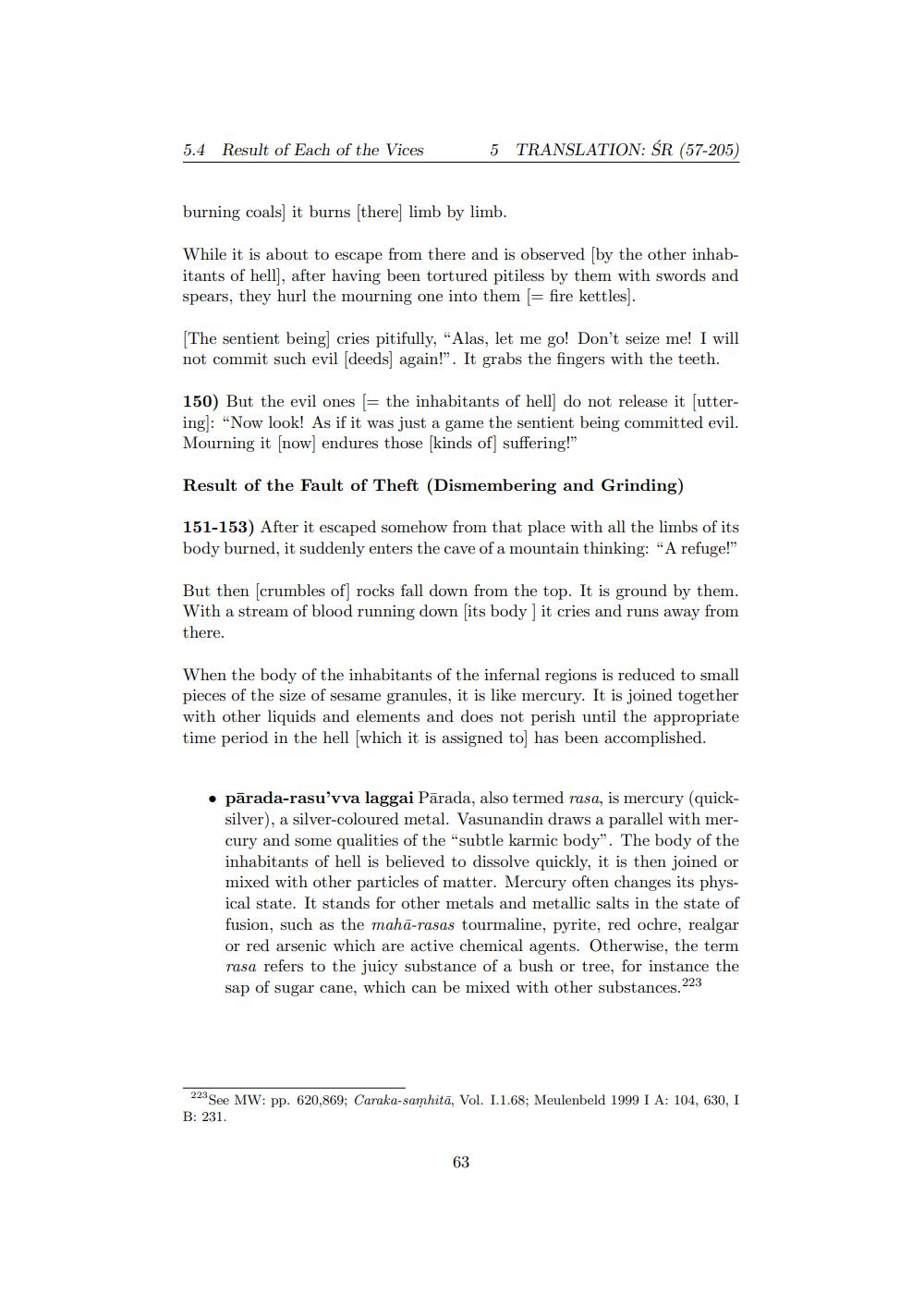________________
5.4 Result of Each of the Vices
5 TRANSLATION: ŚR (57-205)
burning coals) it burns (there) limb by limb.
While it is about to escape from there and is observed by the other inhabitants of hell], after having been tortured pitiless by them with swords and spears, they hurl the mourning one into them (=fire kettles).
[The sentient being cries pitifully, "Alas, let me go! Don't seize me! I will not commit such evil deeds) again!". It grabs the fingers with the teeth.
150) But the evil ones = the inhabitants of hell] do not release it (utteringl: "Now look! As if it was just a game the sentient being committed evil. Mourning it (now) endures those kinds of suffering!"
Result of the Fault of Theft (Dismembering and Grinding)
151-153) After it escaped somehow from that place with all the limbs of its body burned, it suddenly enters the cave of a mountain thinking: "A refuge!"
But then crumbles of rocks fall down from the top. It is ground by them. With a stream of blood running down (its body ) it cries and runs away from there.
When the body of the inhabitants of the infernal regions is reduced to small pieces of the size of sesame granules, it is like mercury. It is joined together with other liquids and elements and does not perish until the appropriate time period in the hell (which it is assigned to has been accomplished.
• pārada-rasu'vva laggai Pārada, also termed rasa, is mercury (quick
silver), a silver-coloured metal. Vasunandin draws a parallel with mercury and some qualities of the "subtle karmic body". The body of the inhabitants of hell is believed to dissolve quickly, it is then joined or mixed with other particles of matter. Mercury often changes its physical state. It stands for other metals and metallic salts in the state of fusion, such as the mahā-rasas tourmaline, pyrite, red ochre, realgar or red arsenic which are active chemical agents. Otherwise, the term rasa refers to the juicy substance of a bush or tree, for instance the sap of sugar cane, which can be mixed with other substances.223
223 See MW: pp. 620,869; Caraka-samhita, Vol. 1.1.68; Meulenbeld 1999 I A: 104, 630, I B: 231.
63




